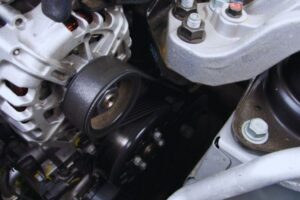The Tesla Model 3 and Model Y both rely on a 12-volt battery to power their auxiliary systems.
While the battery is not used to propel the vehicle, it is essential for starting the car and powering the lights, audio system, and other electronics. Over time, the 12-volt battery may need to be replaced, just like any other car battery.
Replacing the 12-volt battery in a Tesla is a relatively straightforward process, but it’s important to use the correct battery to avoid damaging the vehicle. According to Tesla’s documentation, the low voltage lead-acid battery for North American vehicles is the AtlasBX / Hankook 85B24LS 12V 45Ah.
However, the chemistry of Tesla’s 12V batteries seemingly changed from lead-acid to lithium-ion on the Model 3/Y recently. Therefore, it’s important to double-check which type of battery your vehicle requires before making a purchase.
While some Tesla owners may choose to replace the 12-volt battery themselves, others may prefer to have the replacement done by a Tesla service technician. Tesla offers mobile service appointments, which allow owners to have their battery replaced at home or work.
Regardless of whether the owner chooses to replace the battery themselves or have it done by a technician, it’s important to ensure that the replacement is done correctly to avoid any issues with the vehicle’s electronics.
Preparation for 12V Battery Replacement
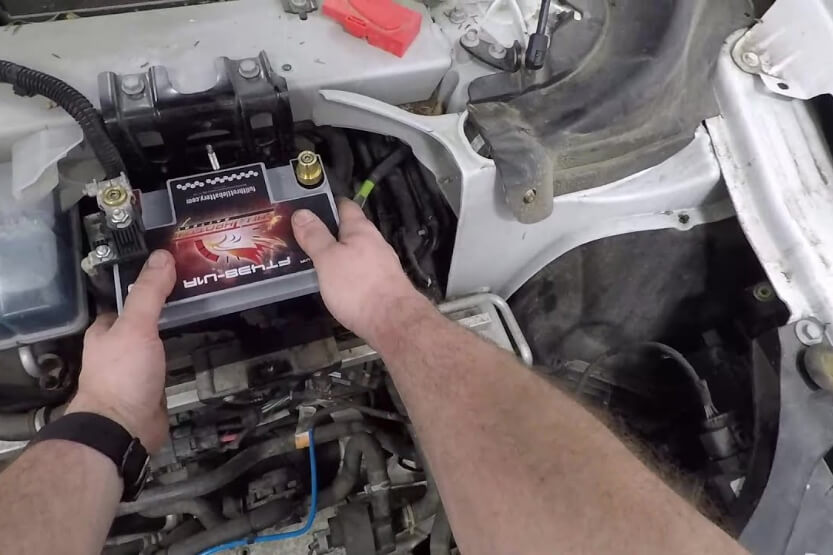
Before starting the 12V battery replacement process, it is essential to take some necessary precautions to ensure safety. This section will cover the necessary preparations to undertake before replacing the 12V battery in a Tesla car.
Safety Precautions and Personal Protection Equipment
Replacing the 12V battery in a Tesla car requires some level of expertise and caution. It is crucial to ensure that the power is off before starting the replacement process.
Thus, it is recommended to disconnect the negative terminal of the battery before starting the replacement process. This will prevent electrical shock and other potential injuries.
Additionally, it is essential to wear personal protection equipment such as gloves and eye protection. Gloves will protect the hands from potential electric shock and battery acid, while eye protection will protect the eyes from any debris that may come off during the replacement process.
Tools and Materials Needed
To replace the 12V battery in a Tesla car, the following tools and materials are required:
- New 12V battery
- Gloves
- Eye protection
- Socket wrench
- Torque wrench
- Plastic trim removal tool
Accessing the 12V Battery Location
The 12V battery in a Tesla car is located under the rear seat or in the front trunk, depending on the model. To access the battery, it is necessary to remove the underhood apron or the rear seat. The underhood apron is located at the front of the car, while the rear seat is located at the back of the car.
Once the underhood apron or the rear seat is removed, the battery can be accessed and replaced. It is essential to follow the manufacturer’s instructions when replacing the battery to avoid any damage to the car or injury to the person replacing the battery.
In conclusion, replacing the 12V battery in a Tesla car requires some level of expertise and caution. It is crucial to follow the necessary safety precautions and to have the required tools and materials before starting the replacement process.
Step-by-Step Guide to Replacing the 12V Battery
Replacing the 12V battery in a Tesla vehicle is a simple process that can be done by following a few steps. Here is a step-by-step guide to replacing the 12V battery in a Tesla Model 3.
Removing the Old 12V Battery
Before removing the old 12V battery, it is important to turn off the vehicle and disconnect the high-voltage battery. This can be done by following the instructions in the owner’s manual. Once the high-voltage battery is disconnected, you can begin removing the old 12V battery.
- Remove the positive (+) terminal cover by pulling it upwards.
- Loosen the negative (-) terminal nut using a 10mm socket wrench and remove the negative (-) terminal from the battery.
- Remove the first responder loop from the positive (+) terminal by pulling it upwards.
- Remove the vent tube hose from the battery by pulling it upwards.
- Remove the battery hold down by unscrewing the two bolts using a 10mm socket wrench.
- Remove the old 12V battery from the vehicle.
Installing the New 12V Battery
Once the old 12V battery has been removed, it is time to install the new one.
- Place the new 12V battery into the vehicle.
- Install the battery hold down by screwing in the two bolts using a 10mm socket wrench.
- Reconnect the vent tube hose to the battery.
- Reconnect the first responder loop to the positive (+) terminal by pushing it downwards.
- Reconnect the negative (-) terminal to the battery and tighten the nut using a 10mm socket wrench.
- Install the positive (+) terminal cover by pushing it downwards.
Post-Installation Checks
After installing the new 12V battery, it is important to perform a few checks to ensure that everything is working properly.
- Turn on the vehicle and check the instrument panel for any warning lights.
- Check that the vehicle’s systems are functioning properly.
- Check the battery voltage using a multimeter. The voltage should be between 12.5V and 13.5V.
- Dispose of the old 12V battery properly.
By following these steps, replacing the 12V battery in a Tesla Model 3 can be done quickly and easily.
Tesla Service and Support Options
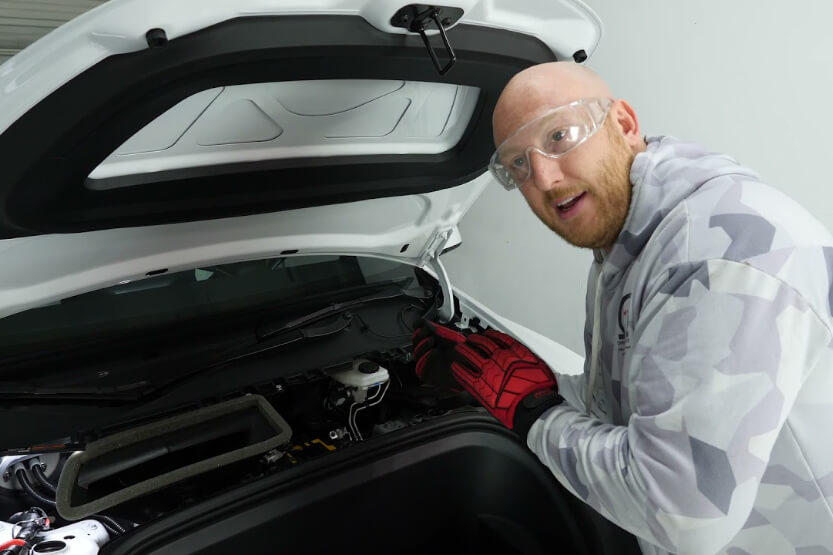
Tesla owners have several options when it comes to servicing and replacing the 12V battery in their vehicles. Here are some of the most common options available:
Tesla Service Center Assistance
Tesla has a network of service centers across the world where owners can take their vehicles for maintenance and repairs.
These service centers are staffed with trained technicians who are familiar with Tesla vehicles and can diagnose and repair issues quickly and efficiently. They can also replace the 12V battery if necessary.
Owners can schedule appointments with their local Tesla service center through the Tesla app or by calling the service center directly. The app also allows owners to track the progress of their repairs and receive updates on their vehicle’s status.
Mobile Service and Roadside Assistance
In addition to service centers, Tesla also offers mobile service and roadside assistance. If an owner is unable to bring their vehicle to a service center, they can request a mobile technician to come to their location to diagnose and repair the issue.
If the issue is with the 12V battery, the mobile technician can replace it on-site. Tesla also offers roadside assistance for owners who experience a breakdown or other issue while on the road.
Warranty and Aftermarket Options
Tesla vehicles come with a warranty that covers defects and issues that arise during normal use. If the 12V battery fails within the warranty period, Tesla will replace it free of charge.
If the vehicle is out of warranty, owners have the option of purchasing a replacement battery from Tesla or from an aftermarket supplier. It is important to note that using an aftermarket replacement battery may void the vehicle’s warranty.
Overall, Tesla owners have several options when it comes to servicing and replacing the 12V battery in their vehicles.
Whether they choose to go to a service center, use mobile service, or purchase an aftermarket replacement, Tesla provides support and assistance to ensure that their vehicles are running smoothly.
Cost Considerations for 12V Battery Replacement
Tesla’s 12V battery is an essential component that powers the vehicle’s electronics and accessories. Like any other battery, it has a limited lifespan and needs to be replaced eventually. Here are some cost considerations to keep in mind when replacing the 12V battery in a Tesla.
Price of Replacement Batteries
The price of a replacement 12V battery for a Tesla can vary depending on the model and type of battery. According to EV Seekers, replacing the 12V lead-acid battery of older Tesla models may cost between $150 and $500, including labor expenses.
On the other hand, a new 12V lithium-ion battery for any basic Tesla model normally costs between $5,000 and $17,000 at a Tesla authorized dealership or service center. It is essential to note that Tesla’s 12V battery is not serviceable and must be replaced entirely.
Labor and Service Fees
The cost of labor and service fees for replacing the 12V battery in a Tesla can vary depending on the service center. According to Tesla Motors Club, the cost of auxiliary battery replacement is $250, while the annual service costs $600. However, the cost of battery replacement may vary depending on the service center’s location and the technician’s experience.
Cost Comparison with ICE Vehicles
Compared to internal combustion engine (ICE) vehicles, Tesla’s 12V battery replacement cost is relatively higher.
According to Ohmmu, the cost of a 12V battery replacement for an ICE vehicle ranges from $50 to $200, depending on the make and model. However, it is essential to note that Tesla’s 12V battery is not comparable to ICE vehicles.
Tesla’s 12V battery is responsible for powering the vehicle’s electronics and accessories, while ICE vehicles use their 12V battery to start the engine.
AtlasBX / Hankook 85B24LS 12V 45Ah
One of the most common replacement batteries for a Tesla is the AtlasBX / Hankook 85B24LS 12V 45Ah.
This battery is compatible with most Tesla models and costs around $200. However, it is essential to note that this battery is not a genuine Tesla part and may not have the same lifespan or reliability as the original battery.
In conclusion, replacing the 12V battery in a Tesla can be an expensive undertaking. It is essential to consider the cost of the replacement battery, labor and service fees, and compare it with ICE vehicles’ cost.
While there are cheaper replacement options available, it is recommended to use genuine Tesla parts to ensure the battery’s reliability and lifespan.
Maintaining Your Tesla’s 12V Battery

Tesla vehicles are equipped with a 12V battery, which is responsible for powering the vehicle’s auxiliary systems and accessories.
While the 12V battery is not as critical to the vehicle’s operation as the main battery pack, it is still an essential component that requires proper maintenance and care. Here are some tips to help you maintain your Tesla’s 12V battery.
Routine Checks and Maintenance Tips
Regularly checking the condition of your Tesla’s 12V battery can help prevent unexpected failures and extend its lifespan. Tesla recommends checking the 12V battery’s voltage and state of charge regularly using the vehicle’s touchscreen display.
It is also important to keep the battery terminals clean and free of corrosion. If you notice any signs of corrosion or damage, it is best to have the battery inspected by a Tesla service professional.
Charging and Power Management
Like any other battery, the 12V battery in your Tesla requires charging to maintain its capacity and performance.
When driving your Tesla, the 12V battery is charged by the vehicle’s main battery pack. However, if the vehicle is parked for an extended period, the 12V battery may discharge and lose its charge.
To prevent this, Tesla recommends keeping your vehicle plugged in whenever possible, especially if you plan to park it for an extended period.
Understanding Battery Lifespan and Efficiency
The lifespan and efficiency of your Tesla’s 12V battery can be affected by various factors, including temperature, usage, and charging habits. Extreme temperatures, both hot and cold, can reduce the battery’s lifespan and performance.
Similarly, frequent deep discharges and rapid charging can also reduce the battery’s efficiency and capacity over time. To maximize the lifespan and efficiency of your Tesla’s 12V battery, it is best to follow Tesla’s recommended charging and usage practices.
In summary, maintaining your Tesla’s 12V battery is essential for ensuring reliable performance and preventing unexpected failures.
Regularly checking the battery’s condition, keeping it charged, and following Tesla’s recommended usage practices can help extend its lifespan and efficiency. If you have any concerns about your Tesla’s 12V battery, it is best to consult a Tesla service professional for advice.
Troubleshooting and Common Issues
Tesla vehicles rely on a 12V lead-acid battery to power the electronics and accessories, and as such, it is essential to keep it in good condition. Here are some common issues that Tesla owners may face, and how to troubleshoot them.
Handling Low Voltage Warnings and Alerts
If you see a warning icon on the dashboard indicating a low voltage warning, it may be necessary to replace the 12V battery.
According to Tesla, the low voltage lead-acid battery for North American vehicles is the AtlasBX / Hankook 85B24LS 12V 45Ah. If you are unsure whether your battery needs to be replaced, it is best to contact Tesla Service.
Dealing with Electrical Failures
If you experience electrical failures, it may be due to a faulty 12V battery. However, it is also possible that the issue is caused by other electronics in the vehicle.
One way to troubleshoot this is to disconnect the 12V battery for a few minutes and then reconnect it. This may reset the electronics and fix the issue. If the problem persists, it is best to contact Tesla Service.
Software Updates and Recall Information
Tesla has released software updates to address issues with the 12V battery, including a fix for rapidly dying batteries. If you are experiencing issues with your 12V battery, it is recommended to check for any available software updates.
Additionally, Tesla has issued a recall for certain Model S and Model X vehicles due to issues with the 12V battery. If your vehicle is affected, Tesla will contact you to schedule a service appointment.
In summary, Tesla owners should be aware of the warning signs of a failing 12V battery, and take appropriate action to address any issues.
It is recommended to contact Tesla Service for any concerns related to the 12V battery, and to stay up to date on any software updates or recalls that may affect your vehicle.
To Summarize
Replacing the 12V battery in a Tesla vehicle is a necessary maintenance task that should not be overlooked. Tesla’s newer models, such as the Model 3 and Model Y, come equipped with a lithium-ion 12V battery, while older models use a lead-acid battery.
The lithium-ion battery is more advanced and resilient, making it a better choice for Tesla owners who need to replace their 12V battery.
Replacing the 12V battery in a Tesla vehicle is a relatively straightforward process that can be done by the owner. Tesla provides detailed instructions on how to remove and replace the battery, which can be found in the vehicle’s owner’s manual or on Tesla’s website.
It is important to note that the 12V battery should be replaced every two to three years to ensure the vehicle’s proper functioning.
When replacing the 12V battery, Tesla owners should consider upgrading to a lithium-ion battery, if possible. The lithium-ion battery is more durable and longer-lasting than the lead-acid battery, making it a better investment in the long run.
Additionally, the lithium-ion battery is smaller and lighter than the lead-acid battery, which can help to improve the vehicle’s overall performance.
In summary, replacing the 12V battery in a Tesla vehicle is an important maintenance task that should not be overlooked. Tesla owners should consider upgrading to a lithium-ion battery when replacing their 12V battery, as it is more advanced and resilient than the lead-acid battery.
Following Tesla’s instructions for removing and replacing the battery can help ensure the vehicle’s proper functioning.


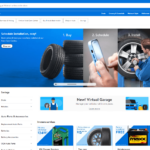


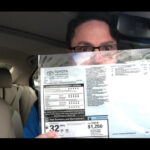

![Read more about the article Battery Light on Dashboard [9 Reasons Why It’s On]](https://roadsumo.com/wp-content/uploads/2022/03/battery-light-on-dashboard-300x200.jpg)

